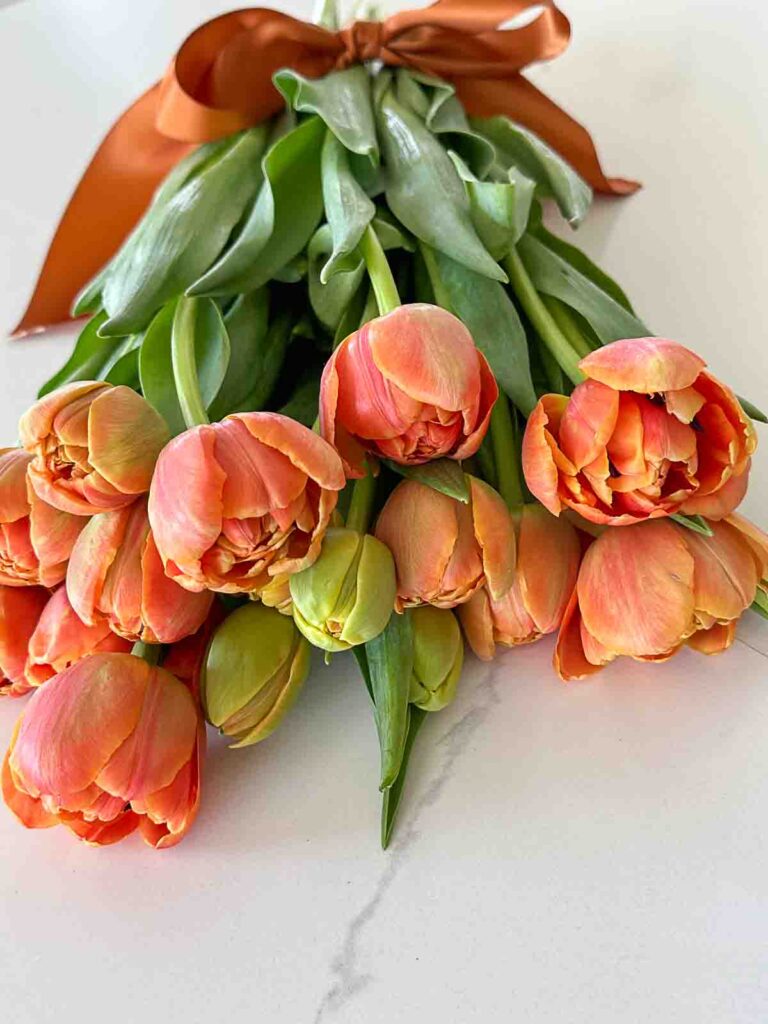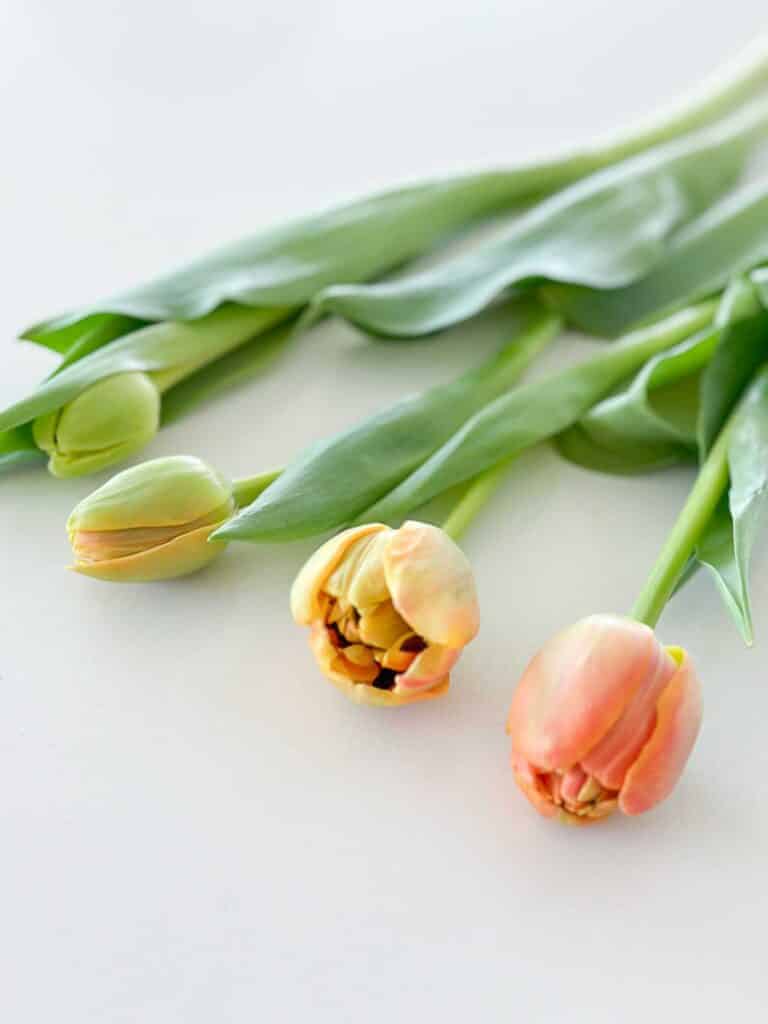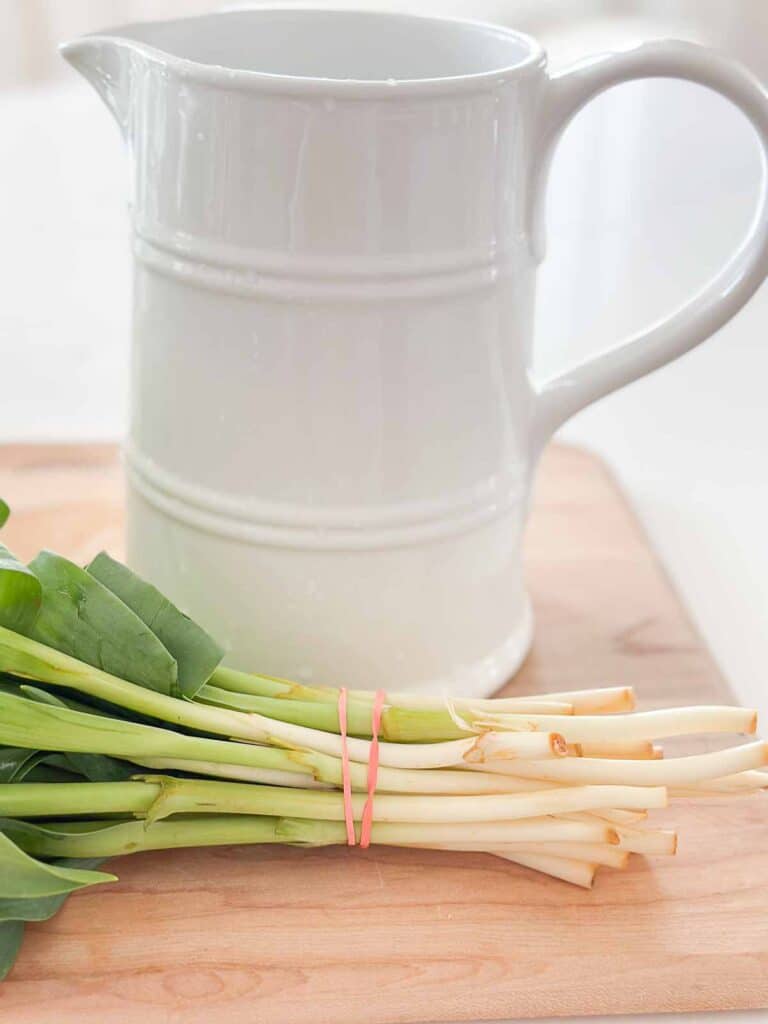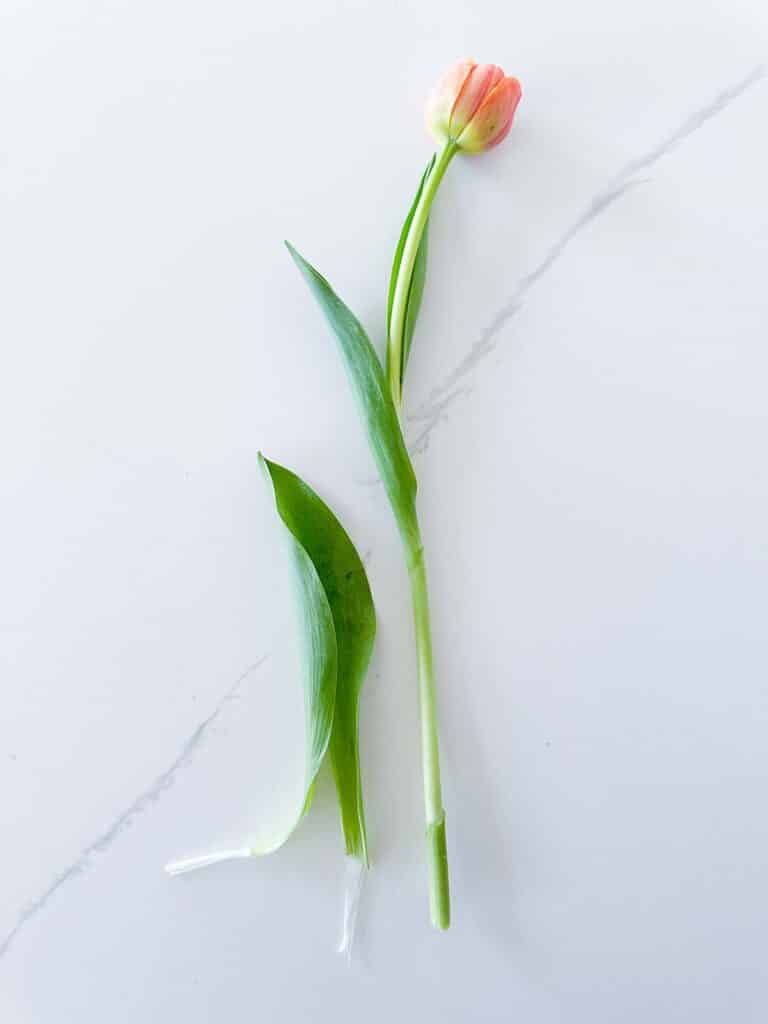Tulips are beautiful flowers that we love to use to decorate our homes. Here are easy ways to care for cut tulips and keep them looking fresher longer, enhancing their beauty!.
A lot of people choose tulips to bring life and charm into a room because they are easy to find, come in beautiful colors, and have a shape that looks like art. Cut tulips can grace your spaces for up to a week with just a little care and attention. Here are easy ways to keep your cut tulips looking fresh longer.
Tulips are one of the most beloved spring flowers. Their cheerful blooms in vibrant shades of pink, red, yellow, purple and white can instantly brighten up any space. But like all cut flowers, tulips have a limited lifespan once cut from the garden. Proper care is essential for keeping tulips looking their best in a vase for as long as possible. Follow these tips and you’ll be able to enjoy your tulip bouquet for up to two weeks!
Choose the Freshest Tulips
It all starts with choosing the freshest blooms you can find Look for tulips with tight, closed buds on firm, upright stems. Avoid any tulips that are drooping or have discolored or damaged petals. The fresher the tulips, the longer they’ll last in your home Buying locally grown tulips from a farmers market is ideal, but grocery stores can also be a good source. Just check the stems and avoid any bunches that are wilted.
Use a Clean Vase
Once you get your tulips home start by filling a clean vase with fresh water. Any bacteria or residue left in an unwashed vase can cause the water to go foul and tulips to deteriorate faster. Wash the vase thoroughly with hot soapy water and rinse well before using. Glass ceramic or metal vases work best as these materials won’t harbor bacteria. Avoid using plastic vases.
Cut Stems at an Angle
Use a sharp knife or garden shears to cut each tulip stem at a 45 degree angle. This maximizes the water intake area and prevents the stem from sitting flat against the bottom of the vase, which can block water flow. Remove any leaves that would fall below the water line as leaves left underwater promote bacterial growth.
Use the Right Vase Height
Choose a vase that is about 2/3 the height of your tulip stems. If the vase is too short, the heavy tulip blooms may droop over the edge. If too tall, the stems can become weak and floppy. The vase height should provide adequate support and keep the tulips upright. For smaller bouquets, opt for narrow-necked vases which support the stems.
Add Cold Water and Floral Preservative
Fill your vase with fresh cold water and add the enclosed packet of floral preservative if one came with your tulips. Floral preservatives contain nutrients and anti-bacterial agents to prolong freshness. Cold water is preferred as tulips last longer in lower temperatures. Replace the water every 2-3 days with fresh cold water and floral preservative.
Display Tulips in a Cool Spot
Place your tulips in a cool, draft-free spot in your home. Avoid placing them near heat sources like radiators, fireplaces or direct sunlight, as heat speeds up deterioration. An ideal room temperature for tulips is around 60-65°F. You can move them to a cooler spot like an unheated porch or garage overnight if needed.
Recut Stems Every Few Days
Every 2-3 days, recut about an inch off the bottom of the tulip stems and replace the water as mentioned before. This removes any crushed or clogged parts of the stems and ensures the tulips can take up adequate water. Use sharp, clean shears each time for best results.
Remove any Wilting Blooms
Keep an eye on your bouquet and promptly remove any tulips that show signs of wilting. Carefully trim off the stem below the wilted flower. This prevents bacteria from spreading to the healthy blooms. Staggered blooming is normal, so you may need to remove faded blooms while new buds open up.
Add a Penny
Here’s a neat trick to try – simply add a copper penny to the vase water. The copper acts as an antibacterial agent and can help extend the lifespan of cut flowers. Just be sure to use pennies minted before 1982, as newer ones lack sufficient copper.
Enjoy the Changes
Keep in mind that cut tulips will open, grow, elongate and arrange themselves in ways you can’t control. Enjoy these graceful changes as part of the natural beauty of tulips. They shift toward light sources and their heavy blooms cause stems to bend into lovely fluid shapes. Embrace this process!
Avoid Direct Sunlight
While tulips love sunlight in the garden, cut blooms last longer in indirect light. Avoid placing them in direct sun, which can overheat the water and cause stems to weaken. Rotate the vase periodically so all sides get even exposure to ambient indoor light. But keep them out of hot windows.
Use Floral Arranger’s Tape if Needed
If tulip stems become weak and floppy but flowers are still fresh, use special flexible floral tape to gently bind them to bamboo skewers for support. This extends their vase life considerably. You can find florist tape in most craft stores.
Enjoy Their Fragrance
One of the best parts of tulips is their lovely fragrance. Make sure to place them somewhere you can fully enjoy their scent. Levels vary among tulip varieties but most have a light, sweet perfume.
Combining with Other Flowers
Tulips pair beautifully with other spring blooms like hyacinths, daffodils, lilies and irises. Create pretty mixed bouquets that combine tulips with these complementary flowers. Just be sure all stems are cut and cared for properly.
Staggering Tulips for Longer Enjoyment
If you want to prolong your tulip season, buy batches of blooms at different times so you have a succession of fresh bouquets. Or pot up bulbs in fall for indoor forcing to extend your tulip display into early spring before outdoor blooms peak.
Preventing Wilting with Ice Cubes
If your tulip blooms are opening too quickly, add an ice cube or two to the vase water to slow things down. The cool temperature will slow the maturation process. Just be sure to replace the water frequently to prevent bacterial growth in the warm water as the ice melts.
Keep Cats Away from Toxic Tulips
If you have curious pets at home, be sure to keep fresh tulip bouquets well out of reach. The bulbs of tulips contain toxins that can be harmful to cats and dogs if ingested. It’s safest to display tulips in areas pets can’t access.
Enjoying Tulips in Various Rooms
One of the best things about a tulip bouquet is that it can brighten up any space. Display them prominently on a kitchen, dining or coffee table. Tulips also make beautiful bedroom accents. Just keep them out of direct sunlight and away from heat sources.
Caring for Tulips in Religious Displays
Tulips are traditional flowers used to decorate churches and temple displays. Care for cut tulips by replacing water every two days and recutting stems. Keep floral foam soaked and moist. Remove faded blooms promptly to maintain a beautiful display.
When properly cared for, a bouquet of fresh tulips can bring joy and beauty to your home for up to two weeks. Follow these tips and you’ll be amazed at how long you can enjoy their vibrant blooms. Nothing ushers in the welcome sights and scents of spring like a vase full of colorful tulips!
Choosing The Right Tulips

It’s easy to choose the right tulips for a week of beauty and enjoyment. Here are a few other things to look for when choosing the right bunch of tulips:
- You can select tulips with closed flower buds. Just make sure the flower’s color is easily seen. This is called a color crack. See the below.
- Don’t be afraid to use tulips that aren’t open yet; they look nice in a tulip arrangement.
- Look for stems that are firm and not floppy.
- Check that the leaves are not crushed or yellow.
- Look at the bottom of the stems. If they look dry or cracked, put that bunch back.

We’ve found the best bunch of fresh-cut tulips. Here are the best ways to keep them fresh when you get them home.
By the time you get home, your tulips are probably starting to wilt and need rehydration. This will help extend the life of your tulips, and it is easy to condition or rehydrate tulips. I know most of us want to immediately put our flowers in a vase and display them. But if you wait a little while and do a few simple things, your tulips will look much better for a lot longer.
Cut The Tulip Stems

The above shows the ends of the tulip stems before they were cut. The bulbs were dug up, and I thought the white ends of the stems were so interesting,.
Cut the tulip stems at a 45° angle. Use a pair of sharp scissors or a knife. This is an initial cut, so water can flow up the stem.

Part of the beauty of tulips is their long, graceful leaves. Some leaves should be removed to keep tulips healthy and fresh. For conditioning, remove the most outer leaves on the stem.
Tips and tricks Tulips
FAQ
How to keep tulips alive in a vase?
How long do tulips last in a vase?
How do you take care of potted tulips?
How to stop tulips from drooping?
How do you take care of a tulip vase?
Tulips thrive on fresh water and can add color to any room. Remove the tulips from the vase. Carefully cut off any foliage such as sprouts and leaves from the stems. Only cut the foliage off from the part of the stem that will be submerged in water. Empty the vase and fill with fresh water about 3/4 of the way up.
How do you keep tulips from rotting in a vase?
When you bring your tulips inside, use clean clippers to give them a fresh cut before wrapping the stems in newspaper or brown craft paper to keep them straight. Also, strip off any browning lower leaves so they won’t rot in the vase water. The bacteria in the dirty water can cause the flower stems to become mushy.
How do you keep tulips hydrated?
1. Cut Stems at an Angle: Before placing your tulips into the vase, trim their stems at a 45-degree angle. This simple step enhances water absorption, ensuring your tulips stay well-hydrated for a longer-lasting vibrancy.
How do you keep Tulip leaves fresh?
Cold water helps keep the flower stems fresh and crisp, while warm or hot water can cause them to get weak and soggy. Remove the leaves from the base of the stems. Submerging leaves below the waterline can spoil the tulips. Look for any leaves on the tulip stems that will be submerged in the water when you put them in the vase.
- The Ultimate Guide to Growing Strawberries in Raised Beds - August 8, 2025
- No-Dig Garden Beds: The Easiest Way to Grow a Beautiful Garden - August 6, 2025
- How to Protect and Preserve Wood for Raised Garden Beds - August 6, 2025

